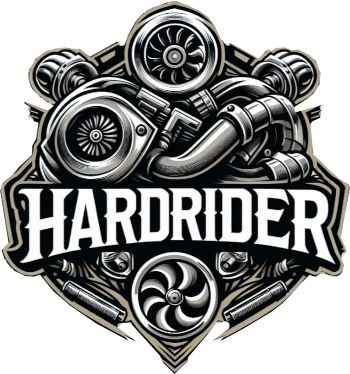
Motorcycle Tutorials & Info
MISCELLANEOUS
Power Commander Tune Downloads - by Dynojet
Power Commander 3 Intro - by Chemist
Power Commander Overview - by Ninja Forums
Power Commander AFR Setup - by Ebra Baek
Power Commander 5 Setup Tutorial - by Dynojet
Power Commander 6 Comparison - by Cuervo ATV
Power Commander Vrod (1) - by Reject Renovations
Power Commander Vrod (2) - by F15 OH
ECU Flash vs Power Commander - by Revzill
--
Bazzazz Map Downloads - by Bazzazz
Carb Cleaning Bandit 1200 (2002) - by MotoResto Florida
Bandit Tail Rebuild + Full Custom - RK_Design 66

NITROUS
HardRider Nitrous Installation Manual - by HardRider
Filling Nitrous Bottles (A) - by Spinolio
Filling Nitrous Bottles (B) - by Finnigan's Garage
Understanding the Bottle Markings - by Nitrous Outlet
Nitrous Flow Gauge - by Jeff Wiebe
The Wet Nitrous System - by Holley
How to Test Solenoids - by TJ Autocare
How to Inspect Solenoids - by Pro Nitrous
How to Install Solenoids - by Holley
TURBO
Overview of ProBoost Turbo Install - by ProBoost
How to Install a ProBoost Turbo - by Stunt Freaks Team
How to Degree Cams on Busa - by Boosted Cycle Performance
How to Degree Cams Another Version - by C3L 1CA 94
Rebuilding Turbo Busa - by MightDQ
Adjusting the Wastegate - by DieselPowerSource
ProBoost Fuel Controller - by ProBoost
An internal combustion engine relies on a supply of oxygen to burn the fuel that makes the pistons pump.
If you can increase the oxygen supply, you can burn more fuel, and therefore increase power and performance.
Tanks of pressurized liquid nitrous oxide are connected to the Airbox or TB spacers for injection by feed lines.
The nitrous (and fuel in wet systems) are fed to the intake manifold when the throttle is opened wide, turning into a gas because of the lack of pressure in the surrounding air.
This causes a large drop in intake charge temperature, resulting in a denser charge, further allowing more air/fuel mixture to enter the cylinder.
As the piston compresses, the intense heat breaks the oxygen atom attached to the N2O (nitrous oxide), which is then free to be used in combustion and mix with the extra fuel to generate more power.
There are a few books you can buy that have lots of info on this but the one that is the best is "The nitrous oxide high performance manual" by Trevor "the wizard of nos" langfield. In his book he breaks down all the major nos company's kits and compared them. This book is a must have. Ever little detail of injecting nos is broken down and explained. I will type his chapter on wet vs. dry.
Dry systems versus wet systems
A wet system is the traditional nitrous system setup, conisting of a fuel and nitrous solenoid and an extra (combined in most cases) fuel and nitrous injector, which is mounted in the induction system as a convenient way to introduce the fuel and nitrous oxide. The complete system works almost separately to the rest of the engines's fuel system. Wet systems are practically universal and are suitable for engines with fuel injection and carburettors. A wet system is so called because the fuel is injected into the induction system, "wetting" the manifold internals with fuel along the way (whether the manifold is originally a dry fuel injection manifold or a wet carburettor manifold).
Dry systems use the same principles to introduce nitrous oxide into the engine, i.e. a control solenoid with an injector positioned in the inductions system. However, the fuel enrichment methos id completely different and doesn't require a solenoid or an extra injector. Instead of using a standalone fuel control system, which works independently of the engine's fuel injection system, a dry system utilises the surplus fuel delivery capacity of the original fuel system. The fuel enrichment is then added throught the orginal injectors by either increasing the fuel pressure or extending the on-time of the injectors. A "dry" system is so called because the additional fuel doesn't "wet" the inlet tract on its way to the engine, and is injected by the engine's own injectors.
While the concept of dry systems has the potential to supass traditional wet systems, most current methods of making the fuel system deliver more fuel are at best inadequate. As metioned earlier, the majority of current dry systems increase the fuel flow in one of two ways:
1)Current mass-market dry systems increase the fuel pressure to increase the fuel flow throught the injectors. This is achieved by supplying low pressure nitrous gas to the original fuel pressure regulator or a very small bleed off jet. The standart injector pulse width is maintained and, as a consequence, restricts the fuel flow limiting the potential power gain from the system. Although it might well be possible to boost the fuel pressure to in exces of 80psi, it's pointless if it supasses the injectors's flow capacity. some injectors aren't capable of operating at double the normal 35-45psi fuel pressure, so a general safe rule is not to increase the pressure above 40%.
2)Electronically increase the injector pulse width. an electronic unit sends a signal to the ecu, telling it to keep the injectors open for longer and, in extreme cases, fully open at wide open throttle. How much it's possible to increase the fuel flow using this method will depend on the maxumum flow rate of the current injectors and their original maximum duty cycle. If the duty cycle is currently 80% they pulse open for 80% of the time and off for 20% of the time. This means that fuel flow can only be increased by a maximim of 20% by keepting the injectors open 100% of the time.
In theory, s system which moderately boosts the fuel pressure and extends the pulse with of the injector on time would be capable of adding the maximum amount of extra power. Just how much potential is remaining in the fuel system will still determine the limit of the potential power that can be gained by fitting a dry nitrous system.
Dry systems have a number of advantages over wet systems:
1) the potential for fuel drop out and fuel puddles at higher power levels is completely eliminated.
2)Theoretically, fuel distributilnd to each cylinder is more likely to be equeal, but in practive, se wet of original fuel injectors are unlikely to flow even amounts of fuel. Even if fuel was evenly distributed, this is not necessarily and advantage over the distribution achieved with wet systems.
3)The installation is generally simpler.
4)Fewer components should make the system cheaper however, it rarely does, especially when all aspects are taken into account.
While dry systems have undoubtedly solved some problems, they have created others:
1)The fuel may be distributed evenly (although that can't be determined for certain without first testing the injector flow) with current dry systems, but the use of a single nitrous injector obviously can't achieve the same degree of even distribution that the fuel system should achieve. In some instances, it can result in the majority of nitrous oxide being fed to just on cylinder, whilst that cylinder only recieves a quarter of the extra fuel (in case of a 4 cylinder engine). The consequence of this extreme example would be a melted plug at best, or a broken piston at worst.
2)OEM fuel injectors are not supllied in particularly well-matched sets from the factory and their performance deteriorates with use, resulting in partial blockages and flow restrictions. Therefore, unless you either have them cleaned, flow tested and matched, or buy a new set of matched injectors, you run an increased risk of compnent failure due to one cylinder running leaner than the others.
3)The standard fuel injectors are restrictive and can only flow enough extra fuel to add 50 or 75bhp (depending on engine size) at the very most. However, you can fit specifically designed, high flow fuel injectors that are capable of flowing 200bhp or more.
4)All fixed hit dry and wet kits deliver a constant amount of nitrus oxide under all conditions, regardless of rpm. A wet system delivers a matched amount of fuel in the same indepenent way, regardless of engine rmp. However, this is not the case with dry kits where the fuel deliver varies with rpm due to the crude methods currently being used to boost the fuel pressure. The engine's normal fuel delivery varies with rpm and load, so adding the fuel enrichment for the nitrous kit by boosting the fuel pressure will do the same. This is far from ideal when the nitrous is delivered at a constant rate resulting in less than optimum results.
The fuel injected Suzuki Hayabusa is a monster in stock form, but who leaves a 'busa stock? Big bore, long stroke, nitrous and turbos are now the norm for this motorcycle. One thing that is easily overlooked is the fuel system. We get too caught up in displacement and horsepower that we forget that fuel is required to make that power.
The Gen 1 Hayabusa (99-07) fuel system can only support 240hp normally asspirated and about 220 horsepower with nitrous or turbo charger. Larger injectors, billet fuel rail and a good fuel pump are required to make any more power than that.
The Gen 2 (08+) Hayabusa can only safely handle about 250hp before the stock fuel pump starts to loose the flow battle. Upgrading to a new pump will allow 300+ with stock injectors.
1 bar = 14.5psi
1 atm (atmosphere) = 14.7psi
On a average 1 lb of boost equals 10-20rwhp.
Turbo kits are delivered with 0.7bar (10.3psi) preset and makes 270rwhp on Gen1 Busa and 280rwhp Gen2 Busa.
Of course this can be dialed up accordingly to 350rwhp with conditions.
Remember the above is rwhp (rear wheel horsepower). While the Gen2 reports 197hp the actual rwhp is 178 give or take.